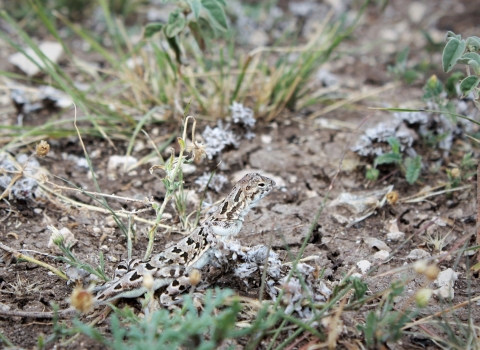More than two decades after the first Neotropical Migratory Bird Conservation Act grants were awarded, birds and people throughout the Americas will benefit from a new round of projects, totaling more than $21 million in federal grants and matching funds.
The NMBCA provides critical support each year for bird conservation and research throughout the Western Hemisphere. It is the only source of federal funding solely dedicated to the conservation of our shared migratory bird heritage. This year, $4.8 million in federal funds will be matched by $16.8 million in partner contributions going to 28 collaborative conservation projects in 18 countries across the Americas.
“We have lost nearly 3 billion birds in North America alone since 1970. We must ensure the diverse habitats where these birds breed, migrate and live are protected,” said Service Director Martha Williams. “Thanks to collaborative partnerships with many here in the U.S., and beyond our borders, these conservation investments will help many of the most at-risk species and ensure that birds continue to flourish for the next hundred years and beyond.”
There are 386 species of neotropical migratory birds that migrate to and from and through the U.S. each year, including songbirds, shorebirds and birds of prey. In addition to their role in pollination, seed dispersal and pest control, birds also provide early warnings of the effects of climate change climate change
Climate change includes both global warming driven by human-induced emissions of greenhouse gases and the resulting large-scale shifts in weather patterns. Though there have been previous periods of climatic change, since the mid-20th century humans have had an unprecedented impact on Earth's climate system and caused change on a global scale.
Learn more about climate change and environmental contamination and contribute billions of dollars to the economy through bird watching and bird feeding industries. This year’s project highlights include:
Restoring Key Habitat of Nearctic Migratory Birds in the Bosawas Biosphere Reserve (Nicaragua)
This project will increase habitat for migratory birds in Nicaragua’s Bosawas Biosphere Reserve and strengthen law enforcement and governance in priority conservation areas. Partners will work closely with local communities to restore areas degraded by unsustainable practices and extensive cattle ranching, as well as to implement agroforestry systems that will also improve local livelihoods and contribute to climate change adaptation and mitigation. Birds that will benefit include golden-winged warbler, cerulean warbler, Canada warbler, and wood thrush.
Building Ecosystem-Based Adaptation in the Chaco (Argentina, Paraguay)
This transnational project builds upon work to reduce threats to at least ten focal migratory bird species in the Gran Chaco region, while increasing local stakeholders’ awareness and engagement in conservation of the region’s importance for migratory birds and stimulating economic incentives within these stakeholder communities to participate in migratory bird conservation. Species benefitting include black-billed cuckoo, Connecticut warbler, bobolink, and bank swallow,
Actionable Science for Grassland Bird Conservation I (U.S., Mexico)
Grantees will continue establishing a network of automated radio telemetry (Motus) stations to link local and landscape-level habitat use with demographic and movement data that may underlie regional occupancy dynamics. Sprague’s pipit, thick-billed longspur, and lark bunting are among the species that will benefit.
By law, NMBCA program invests at least 75% of its funding to projects in Latin America and the Caribbean, where habitat loss and other threats to migratory birds that spend part of their lives in the U.S. are significant and conservation funding is scarce. Because the program works throughout the Western Hemisphere, it is able to support the full life-cycle needs of the birds. For instance, the NMBCA funds work for the Canada warbler and Bicknell’s thrush on their breeding grounds as well as key stopover and wintering sites in Central America, the Caribbean and South America.
The funding will also help prevent these species from being listed as threatened or endangered and prioritization is given to more imperiled species that are listed on the Service’s Birds of Conservation Concern 2021report. The NMBCA operates as a key conservation catalyst and is a critical element to addressing the decline of nearly three billion birds North America has experienced over the last 50 years.
Since 2002, the NMBCA has provided $84 million in grants to support 686 projects in 36 countries. These projects have positively affected over 5 million acres of bird habitat and spurred partnerships on multiple levels contributing an additional $327 million.
For more information on the program, please visit: https://www.fws.gov/program/neotropical-migratory-bird-conservation.

